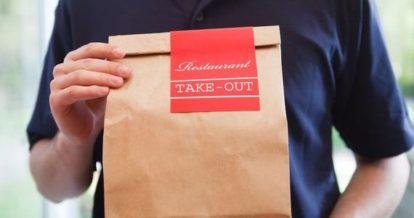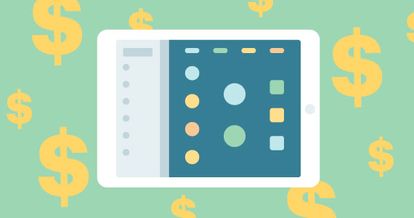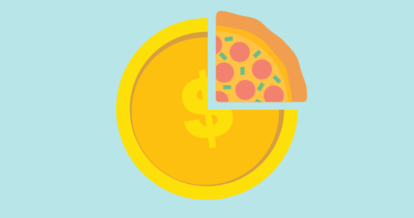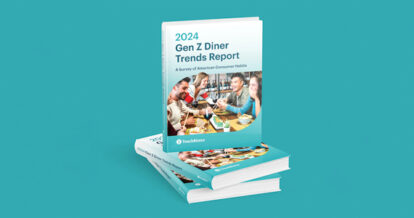It’s been a trying year for the restaurant industry. Even as restrictions finally start to ease, many restaurants continue to rely heavily on takeout and delivery.
But as restaurants move away from third-party takeout and delivery apps (which take deep commission fees), and focus more on their own online ordering system, one issue comes up again and again: how to market your restaurant’s online ordering.
To increase the volume from your own website, diners need to know that placing an ordering directly with you is an option in the first place. If you want to get that message out, you’ll need a plan in place to promote your restaurant’s online ordering systems. This marketing strategy is key to getting more orders and keeping more money from each one.
In this article, we’ll go over how to market your restaurant’s online ordering across different platforms, and what to cover on each, including:
- Social media marketing
- Search engine optimization (also known as SEO)
- Updating local listings (and what to include!)
- Optimizing your presence on third-party apps
You’ll be marketing your online ordering like a pro by the end of this article!
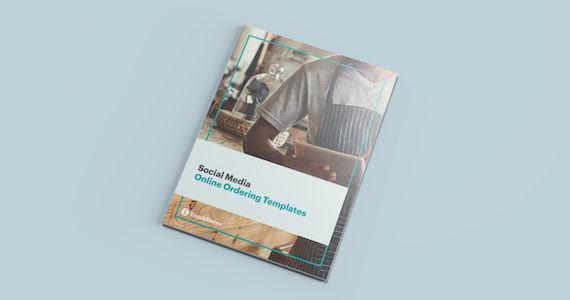
Drive sales and brand awareness with our free social media templates for restaurants.
Social Media Marketing
Having a presence on social media platforms like Facebook and Instagram has always been a huge part of any restaurant marketing plan. But it’s more important now than ever before. An active social media profile keeps your brand top of mind, bringing your dining room and your behind-the-scenes work to customers – especially when they can’t come to you.
It’s also one of the best ways to get the word out about your online ordering – how, what, and when customers can order from you.
Here are the top tips on how to market your restaurant’s online ordering on social media, whether you’re starting fresh or need to optimize your existing profiles and plans.
Set Up and Optimize Accounts
If you don’t already have social media accounts, you’ll want to start by getting set up.
Luckily, getting started is super simple. At the most basic level, you’ll just need an email address, password, username, and profile photo (this could be your restaurant logo or signature dish, or landmark building).
Before you start posting, check all the details of your account to make sure you’ll get the most from it.
Whether you’re starting from scratch or working on existing accounts, take a look at your bio. You don’t have a ton of room, so you’ll want to cover the most important information, including:
- Hours of operation: Most businesses have slashed hours in response to COVID-19. Include that in your bio so diners easily see when you’re open for pickup and delivery.
- Current offering: Many restaurants are calling out in their bio that they’re specifically open for takeout, delivery, and/or curbside pickup. Put that right in the description of your bio.
- Contact information: Adding an email address or phone number auto generates buttons on your Instagram profile (see photo below) that lets users call or email by clicking on them. Facebook has similar functionalities, like adding a button to your business’ page to call or book a table.
- Link to your website: You can add a link that goes directly to your order page! This can be a link in your bio description or a “Order Food” button (set-up instructions here) that links to the page – we recommend including both!
- Address: Now that they’ve ordered, diners need to know where they’re going. Make sure to add an up-to-date address for pick-ups. When you add this, both Facebook and Instagram are able to provide directions to diners.
If you want some inspiration, check out The Peached Tortilla’s Instagram bio:
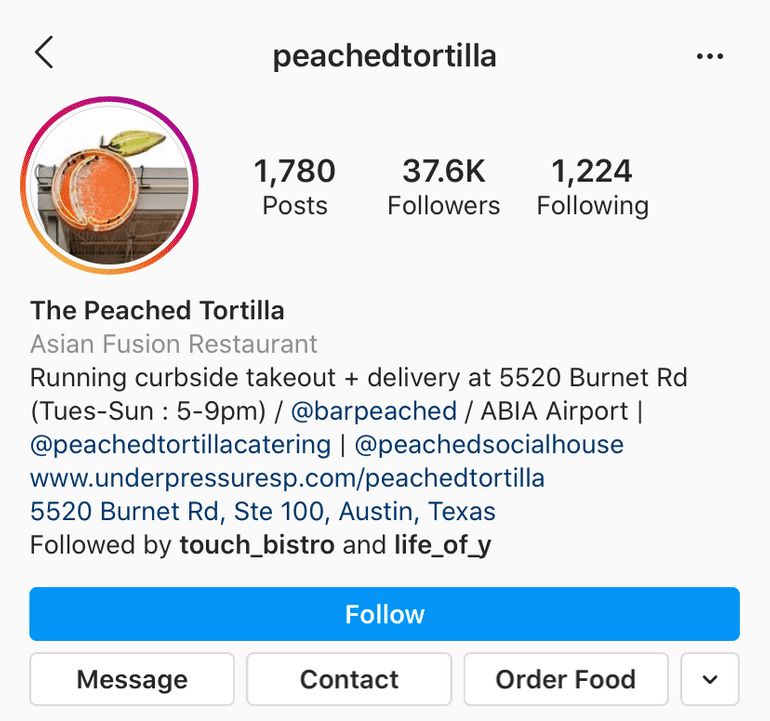
Figure Out What to Post
Now that you’re set up, it’s time to get posting – get creative with how you market your restaurant and really show diners what makes your business special!
But what do you post to accomplish this? There’s a lot you can post on social media – mouthwatering food photos and beyond. Here are some suggestions.
Your Current Menu
Social media is a great place to share your current menu. Is it different than before? Have you optimized it for takeout and delivery?
Take this opportunity to (not so) humble brag about your signature dishes, what’s most popular right now, and anything new you’re trying. Post pictures of specific menu items with a short description, as well as the full online menu. Instagram stories are a perfect spot for these menus – especially if the menu changes regularly or you want to give updates on what’s selling out to create a sense of FOMO (fear of missing out) to drive urgency and orders.
You can even highlight a special menu item as a takeout or curbside pickup offer each week – feature an image of a delicious-looking dish and tell diners they can get it at a special price if they order over directly on your website using the links in your bio.
Human Content
Think of a business you like that has a great social media presence. They probably seem authentic, right? Make sure this comes across in your posts. Share real stories that give your business a human element – why you started your restaurant, staff spotlights, or favorite menu items.
You can also pull this human connection in especially when you share about direct online ordering. Be honest with your diners. Third-party online ordering is expensive, and by choosing to order directly with you, they’re helping support you even further. Adding this human element to something as technical as an online order gives customers something to feel good about – which is what we all want right now.

Drive sales and brand awareness with our free social media templates for restaurants.
Food Safety Measures
What are you doing to keep your diners and staff safe? Put this on social media – share pictures of a new contactless takeout setup optimized for safety on your Instagram page or a longer post on Facebook about your experience implementing these changes. No matter how you choose to feature this, food safety is a hot topic right now, so you should address it.
Incentives for Ordering Direct
We touched on adding a human element about the reasons behind online ordering, but you can also use social media to offer incentives. A free appetizer or 10% off with direct orders – something to sweeten the deal. People might be more likely to embrace direct online ordering more when there’s something in it for them.
Figure Out When to Post
The next question is when and how much to post, which can be tricky. Even across different restaurant concepts, there could be huge variation on the best posting time.
For example, a brewery and coffee shop may have completely different audiences with different social media patterns based on when their audiences are online and looking for this content. Longterm, you’ll want to experiment with the timing and cadence of your posts and find what works best for your audience.
In the meantime, there are some general recommendations to consider. On Facebook, SproutSocial found that the best day to post was Wednesday, with higher engagement on weekdays from about 9am to 3pm. It’s recommended to be posting a minimum of three times a week on Facebook.
Hubspot found that Wednesdays are also a great day to post on Instagram between 10am and 3pm, with the worst engagement on Sundays. It’s recommended for businesses to be posting on Instagram once a day and no more than three times a day.
While these are just general recommendations, it’s a great starting point. Don’t beat yourself up if you miss a recommended window or don’t have enough photos to post this often – it really is about finding what’s best for your business and doable for you.

Grow Your Following
Naturally, people want to grow their following on social media – it means there are more eyes on what you’re posting. And more eyes means more potential diners.
One way to grow your social media following is through paid ads or boosted content. Both of these promotion types will help you reach new audiences through paid pushes where you target different people based on age, location, and other factors. You can even target people who are similar to those who already like your page or follow your account. You don’t have to spend a ton of money on paid posts, but a small budget will help you reach more people.
The main difference between ads and boosted content is that boosted content will live in your “feeds” forever – you can promote an Instagram image or a blog post on Facebook to get more eyes on it. An ad will disappear after your run dates.
However, if you don’t have a budget for paid social media right now, you can also build out a pretty solid organic strategy with hashtags. Hashtags are a way that users on social media find new content.
Use hashtags that describe the post (#burgers, #foodporn), where you are (#nyc #chicago), and what you offer (#takeout #takeoutnyc #curbside). Instagram allows up to 30 hashtags per post, but too many may make it seem spammy. Try using three to four important ones at the bottom of your caption to help diners find you and grow your following organically.
Growing your following boils down to one simple equation. More followers mean more eyes on your dishes, which turns into more potential diners and more sales.
Encourage Audience Sharing
People love sharing delicious takeout meals, so take advantage of this!
When customers post about their experience with your restaurant or food, they’re essentially sharing your business with their whole audience. This is a great way to reach a brand new audience for free – and hopefully gain some new diners.
To encourage audience sharing, give diners everything they need to do so easily. As part of your takeout and delivery orders, include a printout that motivates people to share on social media – including the social media handles or hashtags you would want diners to use when posting.
Even something as simple as takeout food packaging can encourage sharing. Make it stand out while capturing your brand and it becomes a subtle encouragement to share – check out Blondies Pizza’s takeout packaging and how it pops on social media!
Be sure to monitor your social media accounts for mentions, so you can engage with customers in comments and reshare their posts on your own accounts. User-generated content is free content you can use to keep your profile active and connected to the community.
If you aren’t getting as many posts from diners as you might like, try turning audience sharing into a game – post on social media that every time somebody tags you, they’re entered in a draw for a gift card. It will encourage people to share about your restaurant (therefore reaching that new audience of potential future diners) and give you a returning customer when they spend the gift card.
Look Into Influencers
You could also consider influencer marketing as a way to spread the word about online ordering or your restaurant delivery service. Social media influencers are people who have a large – and dedicated – social following. The idea is that if they post about a product or experience, their followers will engage with said brand.
You could have an influencer post about enjoying their meal from your restaurant, sharing how easy the ordering was, or raving about how the quality of food was great even at home.
There are a few areas to consider if you go this route:
- Location: Make sure any influencer you choose is within your area. You don’t want people promoting takeout and delivery to their followers who live outside your delivery range.
- Price: While some influencers will share their experience in exchange for a free meal, many charge above that. Know what you’re willing to pay and be clear about that from the start – it will help you find the right influencers that are also within your budget.
- Messaging: This may impact price, but discuss with the influencer what you want them to include in the post. If you want them to mention they ordered directly through you, make sure that’s clear from that start. You may not be able to control exactly what they say, but giving them some direction can help.

Let your customers know how to order takeout and delivery from you.
Website Updates
People are stuck at home. They’re browsing the Internet for dinner options. You want to make sure two things happen.
- Customers find your website.
- They can easily get the information they need from it and place an order.
Both of these aspects are critical to make sure you don’t miss out on any potential sales. Diners don’t want to have to struggle to find you or find where you’re hiding the online ordering page.
1) How to Increase Traffic
The first step to getting people to order directly through you is by getting them somewhere they can easily do that. This is why traffic is so important – the more people on your website, the more chances for people to order.
Here’s some simple tips for increasing your traffic.
Have Your Website on Different Directories
People aren’t always going to find your restaurant through a direct Google search – if only it was that easy.
Make sure you have an updated link to your website on social media, review sites, and your Google My Business profile. You can even have your website URL included on any print or digital ads. The more chances people have to access your website, the better.
Run Ads
We touched on social ads and boosted posts to help increase the reach of your content on social media, but you can also run ads that push people to your website. You can put as little or as much as you want into these ads – Facebook has a minimum spend of only $1 – but more money tends to equal more traffic.
While you can run ads and boost posts on social media to increase your reach, it tends to be best to focus on ads to drive traffic. Ads for your website can be more timely, focusing on a specific promotion running, for example. You don’t want to boost images living on your grid focusing on more timely pushes, as the boosted content lives there forever. You would have to go back and remember to edit all the captions to reflect current offerings or just run ads and not have to worry about it when the ad run time is over!
You can even have Facebook ads automatically optimize for traffic, helping push more people to your website with little extra effort on your part. Just set your objective as “traffic” when you create the ads (versus a goal of engagements – likes and shares).
Want to learn more about social ads? Check out this article with Facebook ad tips.
Look at Keywords
Nobody would have thought that people would be searching for restaurants with curbside pickup a few months ago, but having these keywords on your website now is key to grabbing more traffic.
Ensure you have updated descriptions across your website, so people will find your website when they search for this. For example, if people are searching for “Chinese food with curbside pickup,” and you don’t have curbside pickup mentioned anywhere on your website, you won’t come up in the search results. This could cost you valuable sales.
If you’re not sure what keywords to include on your website, here’s a starting point for what diners are searching for:
- Contactless pickup
- Curbside pickup
- Food safety
You can use this free tool from BentoBox to find out if your online menu is optimized for search engines.
While keywords are one simple way to boost traffic, there are other methods to optimize your website for search engines – known as SEO. If you want to drive traffic, these small changes to your website can make all the difference.
Want to learn more about restaurant SEO? Check out this article with SEO tips.
Make Sure Your Website Is Mobile-Friendly
If your website isn’t already mobile-friendly, you could be losing a good amount of traffic. After all, over 40% of all web traffic is on mobile devices now.
Making sure your website is mobile-friendly means your homepage will fit on a phone or tablet screen without the user having to zoom in or zoom out to read the page. Having a good mobile experience is a surefire way to boost traffic – and a major way to lose out on traffic, if you aren’t considering it.
Want to learn more about building and optimizing your restaurant’s website? Check out this article with website design tips.
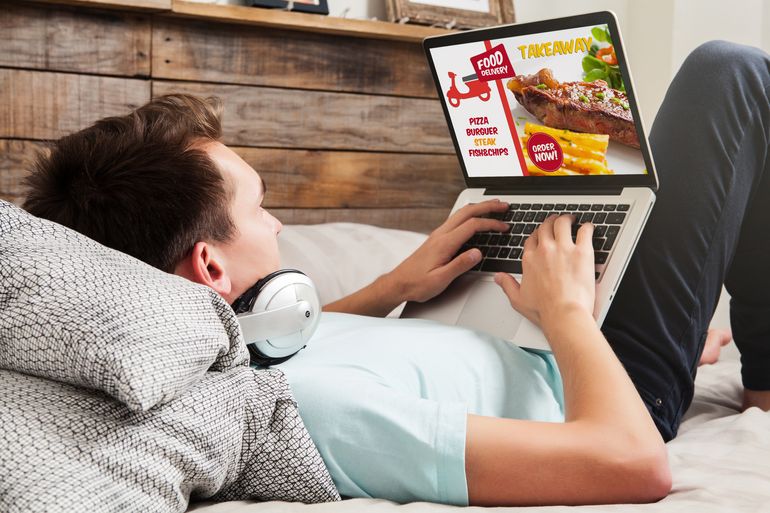
2) How to Optimize for Orders
Now that you have the traffic, it’s time to get those visitors to place orders.
Here are some of the main areas to look at to ensure your online ordering experience is optimized to drive online sales.
Ensure Your Online Ordering Is Front and Center
Make sure it’s as easy as possible for diners to actually place their order to maximize your online sales. Highlight any ORDER NOW buttons in bold colors or feature them in a central spot on the page. You want the eyes to go there immediately when someone lands on the page – this will help people searching specifically for ways to order and prompt those who didn’t have that intention when they started browsing.
Also, try testing your ORDER NOW button in different areas on your website and see if it impacts sales.
For example, if you notice your orders from your website are slowing down, test out a different placement for the button. For each movement, analyze the number of orders over a short period of time (say one to two weeks) and see if there is any improvement.
These small optimization efforts can have a big impact on your bottom line.
Optimize Your Menu
Make sure the menu is easy to read and optimized for sales. Some ways to do this include creating food categories, revisiting descriptions of the dishes, or highlighting special menu options.
You’ll also want to make sure that your menu reflects any changes that have been made because of COVID-19. For example, many states are allowing restaurants to sell liquor as takeout. If you didn’t have your liquor menu as part of your online takeout menu, you’ll want to go and add it. You don’t want to miss out on potential sales because diners don’t know something is available.
Include Images
They say a picture’s worth a thousand words – or, maybe a thousand orders?
Pictures can capture your dishes in a way that just words can’t sometimes. Make sure your website’s main pages and online menu include photos of your food. Having visuals gives potential customers a better sense of what they’re ordering and may inspire them to order more. Remember that we order with our eyes – give your visitors’ eyes something to feast on!

Drive sales and brand awareness with our free social media templates for restaurants.
Local Listings
Local listings like Google My Business and general review sites are another huge marketing tools for your restaurant’s online ordering. By keeping these updated, you have even more profiles online that can push back to your website and your online ordering.
Google My Business
Make sure your business profile on Google My Business page is kept up to date. If diners don’t know you’re open, you could be missing out on valuable sales. Keep this profile regularly updated with the most recent store hours and link to your ordering page.
Google even has options available specifically for restaurant business pages to reflect the current situation. You can manage your dining options to include curbside pickup right on your Google My Business profile, which means those details can also show up on Google and Google Maps – where diners are searching. Keep this up to date as much as possible.
Look here for more details on the changes you can make to your Google My Business profile.

Let your customers know how to order takeout and delivery from you.
Review Sites
Being on review sites is one thing, but being active on them is another.
A lot of restaurant-goers regularly look at reviews to decide where to eat or find restaurants with the best food delivery service. When you take the time to respond to positive and negative reviews, it shows potential diners your restaurant’s personality and that you value your diners’ experiences.
Another part of being active is ensuring all your information is up to date – a common theme in how to market your restaurant online ordering system. Make sure your website, hours, current business model, and online ordering offers (including whether diners have the option to schedule orders in advance) are all included on your review site profiles with the most recent information.
Third-Party Apps
While third-party delivery apps have been taking heat for their commission fees throughout coronavirus, these platforms do have a lot of eyes on them. If you’re already on these apps, you can use them as a marketing platform for your direct online ordering.
If you don’t currently have a third-party online ordering app, start by finding out which is the most popular in your area and has fees you can manage in the short term. Remember, even the best food delivery app will take a percentage of the profit from each order. Think of it as the cost to reach new eyes, similar to the way you pay for social media ads to reach a new audience.
Once you have a partner, you’ll want to get your menu set up. You may not want to offer your complete menu online, as every dish wasn’t meant to travel. Make some changes to the menu with the current climate in mind.
You’ll also want to take this opportunity to point back to your direct online ordering offer. Include a printed flyer in each order placed through third-party apps to encourage them to order directly through you.
Share your website URL and outline the importance of ordering directly through you. People are eager to support small businesses, so communicate why this is an important way to give them a chance to do just that. You can also consider offering incentives when customers place their next order directly from you, like a free appetizer or 10% off when they mention the flyer from their third-party order.

When used correctly, your restaurant’s online ordering can be a powerful tool for your bottom line. But people need to know it exists to drive volume and really have an impact on sales.
With a solid restaurant marketing plan in place, you’ll be able to make the most of online ordering software and keep more of every sale in your pocket.
Sign up for our free weekly TouchBistro Newsletter

